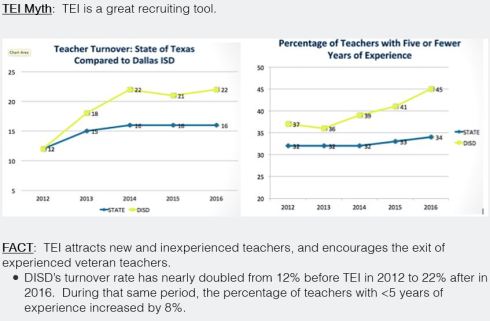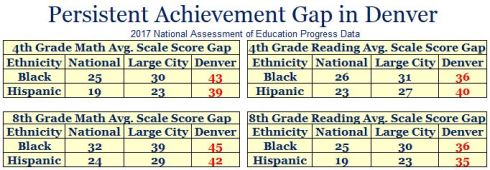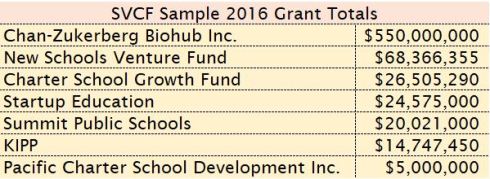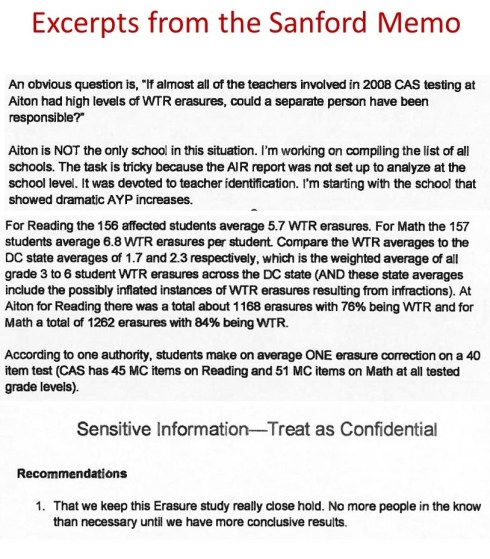By Thomas Ultican 10/17/2019
It is clear that President Trump selected a billionaire enemy of public education to be in charge of schools. However, Betsy DeVos is so easy to dislike and has shined such a big light on the destroy-public-education (DPE) movement that Democrats are fleeing the school choice agenda. If Hillary Clinton had become President, her policies may have permanently damage universal free public education. When WikiLeaks leaked John Podesta’s emails, Hillary Clinton’s campaign Policy Book and its K-12 public education policy recommendations were revealed. Those recommendations were aligned with the DPE playbook supported by neoliberals.
Group Thinks’ Historical Background
In the last two decades of the 20th century, there was a general consensus reached by governing elites that America’s public education system was in dire straits and needed reform. The impetus for this goes back to the Reagan era’s “A Nation at Risk”. It masqueraded as a research paper, but was actually a polemic based on faulty understanding and a misreading of data. In 1991, researchers at the Sandia Laboratory in New Mexico debunked the main points of “A Nation at Risk,” but their report was barely noticed. A growing consensus based on a century old illusion had developed among policy wonks, politicians and leaders in education philanthropy. They all accepted beltway common knowledge and agreed on a broad outline of what needed to be done to confront the “undeniable failure” of public education:
- Institute standards
- Use testing to hold schools accountable
- Apply business based leadership principles and personel
- Create alternate pathways for teacher certification
- Develop competition
- Provide school choice
- Marginalize teachers unions
- End the federalist system of school governance (i.e. locally elected school boards)
In 1985, the Democratic Leadership Council (DLC) was established by Al From. Politico described the DLC thusly:
“The DLC was formed in the 1980s – the debacle of the 1984 Mondale campaign was a key motivator – to wage just that kind of intra-party war against what From and his allies saw as interest-group liberals content to consign the Democratic Party to minority status. The group and its best-known chairman, then-Arkansas Gov. Bill Clinton, pushed balanced budgets, free trade, tough-on-crime policies, and welfare reform – all of which alienated the base, but became a key part of Clinton’s “New Democrat” agenda and his presidential legacy.”
The DLC was made up of a group of neoliberal politicians who took over the Democratic Party in the 1990s.
When Bill and Hillary arrived in Washington DC, a large number of youthful “New Democrats” with elite educations joined them. Many, like Bruce Reed, had already worked in Clinton’s presidential campaign. Marc Tucker, a leader in the standards-driven education reform movement, saw like-minded reformers who also believed that the public school system was outdated and failing. In the infamous “Hillary Letter,” which Tucker began with the salutation “Dear Hillary,” he laid out several reform ideas that would completely change how education is done. He began:
“First, a vision of the kind of national — not federal — human resources development system the nation could have. … What is essential is that we create a seamless web of opportunities, to develop one’s skills that literally extends from cradle to grave and is the same system for everyone — young and old, poor and rich, worker and full-time student. It needs to be a system driven by client needs (not agency regulations or the needs of the organization providing the services), guided by clear standards that define the stages of the system for the people who progress through it, and regulated on the basis of outcomes that providers produce for their clients, not inputs into the system.”
In 1989, Arkansas Governor Bill Clinton had joined President George H. W. Bush at the University of Virginia in Charlottesville for an education conference. The Charlottesville joint communiqué listed the four areas of agreement reached at the summit:
“The President and the nation’s Governors have agreed at this summit to:
- Establish a process for setting national education goals;
- Seek greater flexibility and enhanced accountability in the use of Federal resources to meet the goals, through both regulatory and legislative changes;
- Undertake a major state-by-state effort to restructure our education system; and
- Report annually on progress in achieving our goals.”
Clinton’s 1994 reauthorization of the Elementary and Secondary Education Act (ESEA) embodied these principles. It called for all states to create standards and curricular frameworks. Though not mandatory, the Act along with the Clinton’s proposed goals 2000 prepared the way for the No Child Left Behind Act in 2001, which was a federal takeover of public education.
In 1998, Bill Clinton wrote: “We have worked to raise academic standards, promote accountability, and provide greater competition and choice within the public schools, including support for a dramatic increase in charter schools.”
The Position Book
In December 2014, Dan Schwerin, Hillary Clinton’s speech writer, wrote in an email to John Podesta,
“We wanted to share with you this long book of policy memos that we gave to HRC for vacation reading. As noted in the cover memo, this reflects months of work by a team of about a dozen volunteers who conducted more than 100 interviews with thought leaders in a wide range of fields.”
The K-12 section of the Position Book was presented by Ann O’Leary, who is now California Governor Gavin Newsom’s chief of staff. A Fortune magazine biography of O’Leary described her:
“O’Leary is a diehard policy wonk, especially keen on anything that affects families or education. As Clinton’s Senate aide in 2001, she was at the center of No Child Left Behind—a once popular education initiative that has since soured in the public mind. ‘It was a really important moment,’ she says of the law, which Ted Kennedy crafted and George W. Bush signed. ‘When you look back at what happened, this was serious, bipartisan, constructive work. We were committed to high standards and helping states get there.”’
In the Position Book, O’Leary informs Clinton,
“In preparing for our thinking on K-12 proposals, I solicited a memo from Chis Edley, who recently chaired the National Commission on Educational Equity and Excellence, to go along with the memo you previously received from Neera and Catherine Brown. I also had good conversations with Laurene Powell Jobs and Bruce Reed (highlights of my conversation noted below), and Dan solicited some thoughts from Kate Childs Graham (who is Randi’s speech writer). I have reached out to Linda Darling-Hammond and Randi Weingarten to solicit their ideas as well, and will schedule those conversations after the holidays.
On O’Leary’s conversation with Bruce Reed: Reed worked as a policy director in the 1992 Clinton-Gore campaign and then worked in various capacities throughout the duration of the administration. In 2001, he became CEO of the DLC and served there until it shut down in 2011 at which time he became Chief of Staff for Vice President Joe Biden. In November 2013, Reed left the Obama administration to become President of the Broad Foundation. Professor Jim Horn notes, “This is someone who has never taught a day in his life at any grade level nor had any background in pedagogy or education.”

Hillary and Her Long Time Friend Ely Broad at a Wedding – Google Images
The Reed highlights include;
- Hillary’s initial instincts still hold true – choice in the form of charters, higher standards and making this a center piece of what we do as a country
- Challenge of education reform: school districts are pretty hard, if not impossible, to reform – they are another broken part of democracy
- If you create the Silicon Valley of education improvement, which is what New Orleans has, you can get there; Denver does it, …. pro charter; pro portfolio system for public schools
- Personalized learning tools – modeled in Summit Charters
Here is a different perspective. Summit learning has big money behind it but it is encountering big resistance from students and parents. The reality is that New Orleans’ schools are inefficient, undermine communities, have extremely high management and transportation costs, and still struggle academically. Denver’s schools have turned into a dystopian nightmare since neoliberal Democrats and big money Republicans took control. Democratic local control of schools is the bedrock of American democracy. The portfolio system in an undemocratic scheme to privatize public schools.
On O’Leary’s conversation with Laurene Powell Jobs: Laurene Powell Jobs is famous for having been married to technology genius Steve Jobs. She is a billionaire and co-owns Atlantic magazine. She studied economics and political science at University of Pennsylvania and received an MBA from Stanford; no education training. In 1997, she founded the Emerson Collective which promotes impact investing. She is board chair of The XQ Institute and College Track.
Highlights from Jobs recommendations;
- Re-design entire K-12 system – we know how to do it, but it comes down to political will.
- Think about Charters as our R&D … must allow public schools to have leaders that can pick their team and be held accountable
- Need to increase IQ in the teaching sector: Teach for America; they are a different human capital pipeline
- Need to use technology to transform – technology allows teachers and children to focus on content mastery versus seat time; … This is happening with Sal Kahn and schools in the Bay Area
Some tough realities undermine Jobs’ ideas. Her experiment in redesigning schools has met with failure and it is much more likely that new innovative education developments will come from public schools than charters. Jobs believes teachers are dim bulbs and that Teach For America (TFA) youths with no academic training and a five week summer course are better than the teachers she disrespects. TFA is a plague on American education and there is no way they should be receiving teaching credentials that take more than a year to earn. Her technology claim is also specious. The Organization of Economic Cooperation and Development’s Andreas Schleicher noted when discussing a recent OECD study,
“In most countries, the current use of technology is already past the point of optimal use in schools. We’re at a point where computers are actually hurting learning.”
Some input from Neera Tanden and Catherine Brown: Neera Tanden served in both the Obama and Clinton administrations. She is currently the President of the Center for American Progress (CAP). Catherine Brown is a Senior Fellow at CAP. She worked on NCLB author George Miller’s congressional staff prior to becoming vice president of policy at TFA. She was also a senior consultant for Leadership for Educational Equity which is an organization that works to get TFA alumni elected to school boards. Neera and Catherine mainly presented political analysis but share these ideas.
- In spite of the challenges that remain, the standards-based reforms implemented over the last two decades have resulted in significant, positive change.
- Teach For America … offers a powerful proof point that it is possible to diversify the teaching force while retaining a high bar.
These points were both complete fallacies.
Ann O’Leary also informed Clinton, “There is strong agreement that we need high academic standards in our public school system and that the Common Core will help us to be more globally competitive.”
The Policy Book had no voices championing the public education system or suggesting it needed protecting.
Observations
The Clinton team was going to advance the DPE agenda. Unlike Betsy DeVos, they were not going to alienate neoliberal Democrats. In the final analysis, she and her policy wonks would have done far more damage to public education than we are seeing now.
This history also highlights the importance of being relentless in discovering what is the real education agenda of our Presidential candidates? Trump gave us DeVos. Enough said. Biden was part of Race to the Top, his brother is a charter school entrepreneur and his chief of staff became President of the Broad Foundation. Bernie Sanders is very clear and supportive of public education. He has put out a wonderfully thought-out Marshal Plan for Public Education. Elizabeth Warren has come out in full voiced support for public education and her plan zeros out federal dollars to charter schools. She has published a well thought out plan for public education. Pete Buttigieg is raking in large donations from DPE proponents like Reed Hastings.













